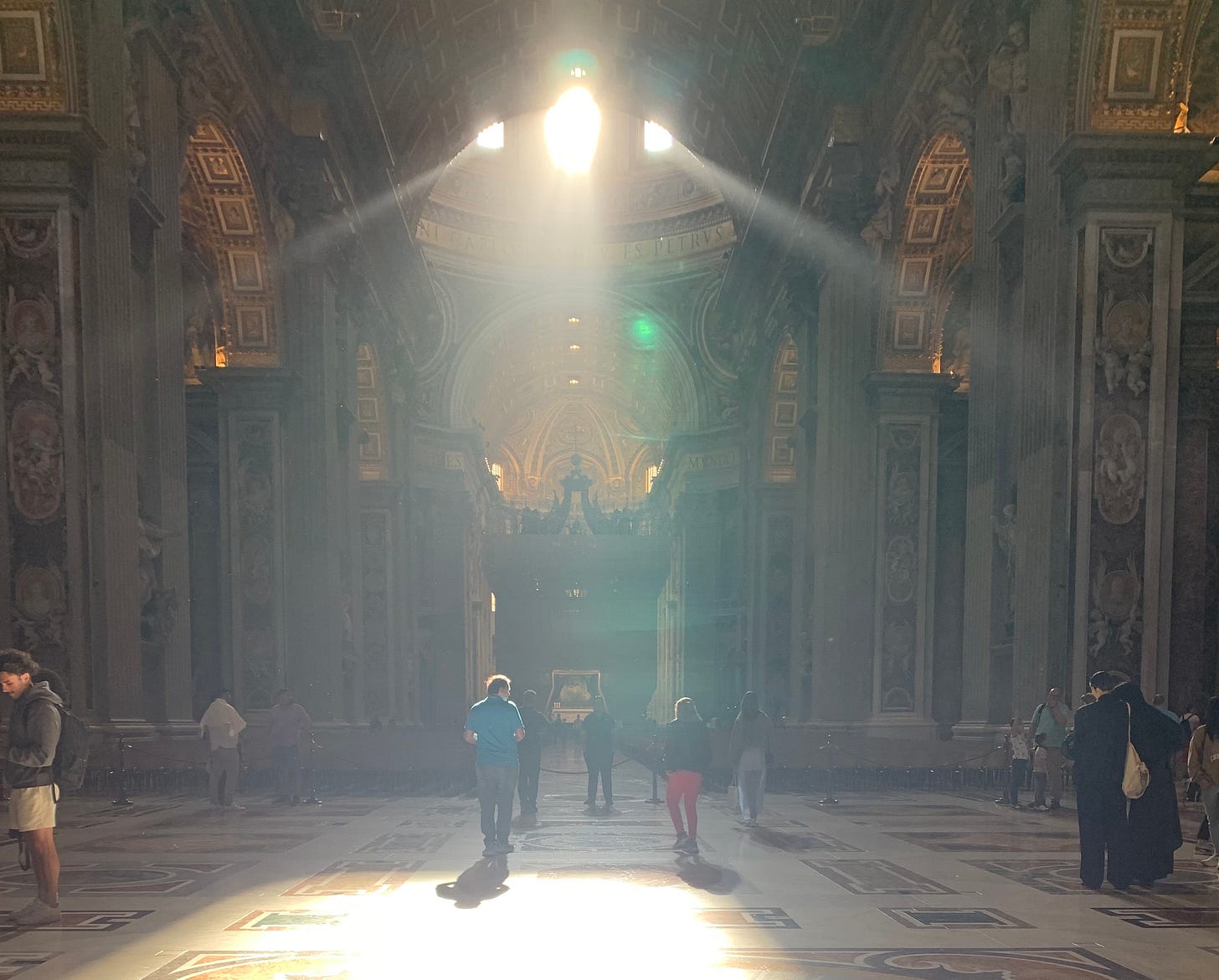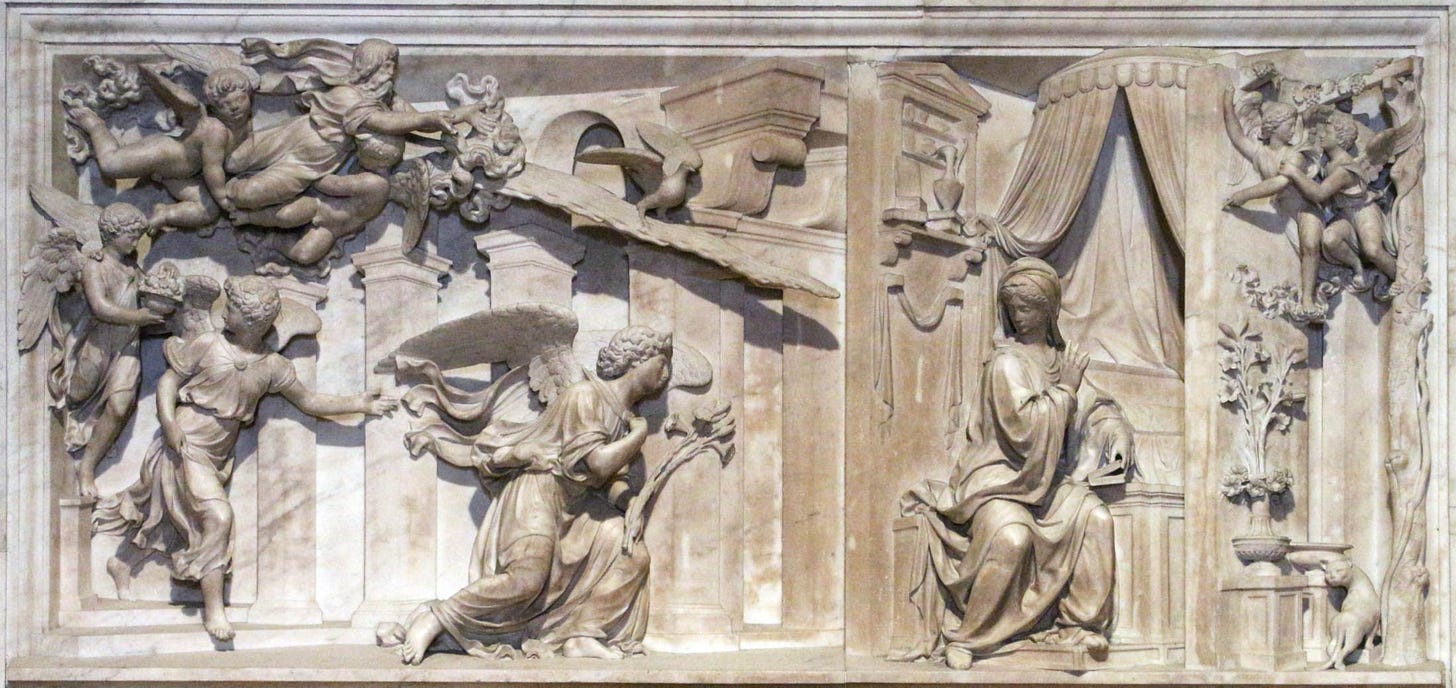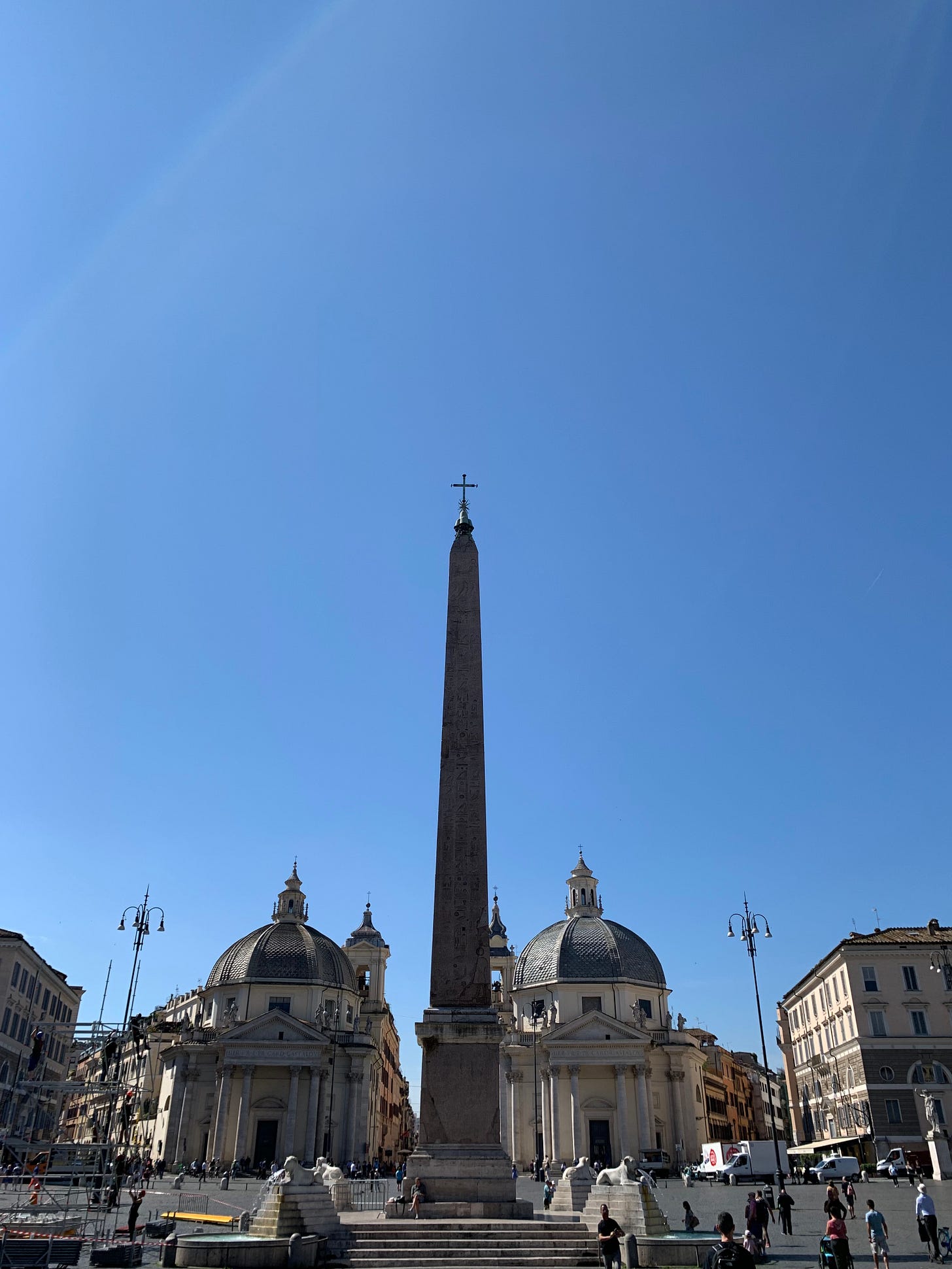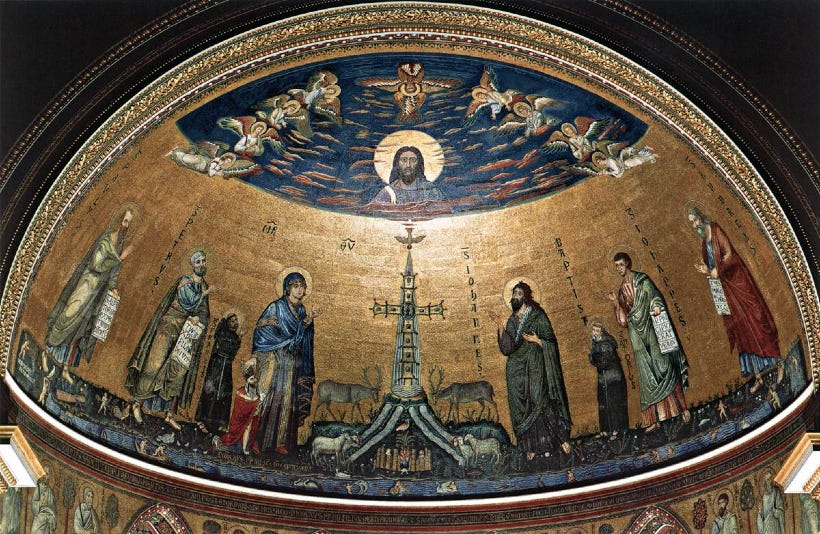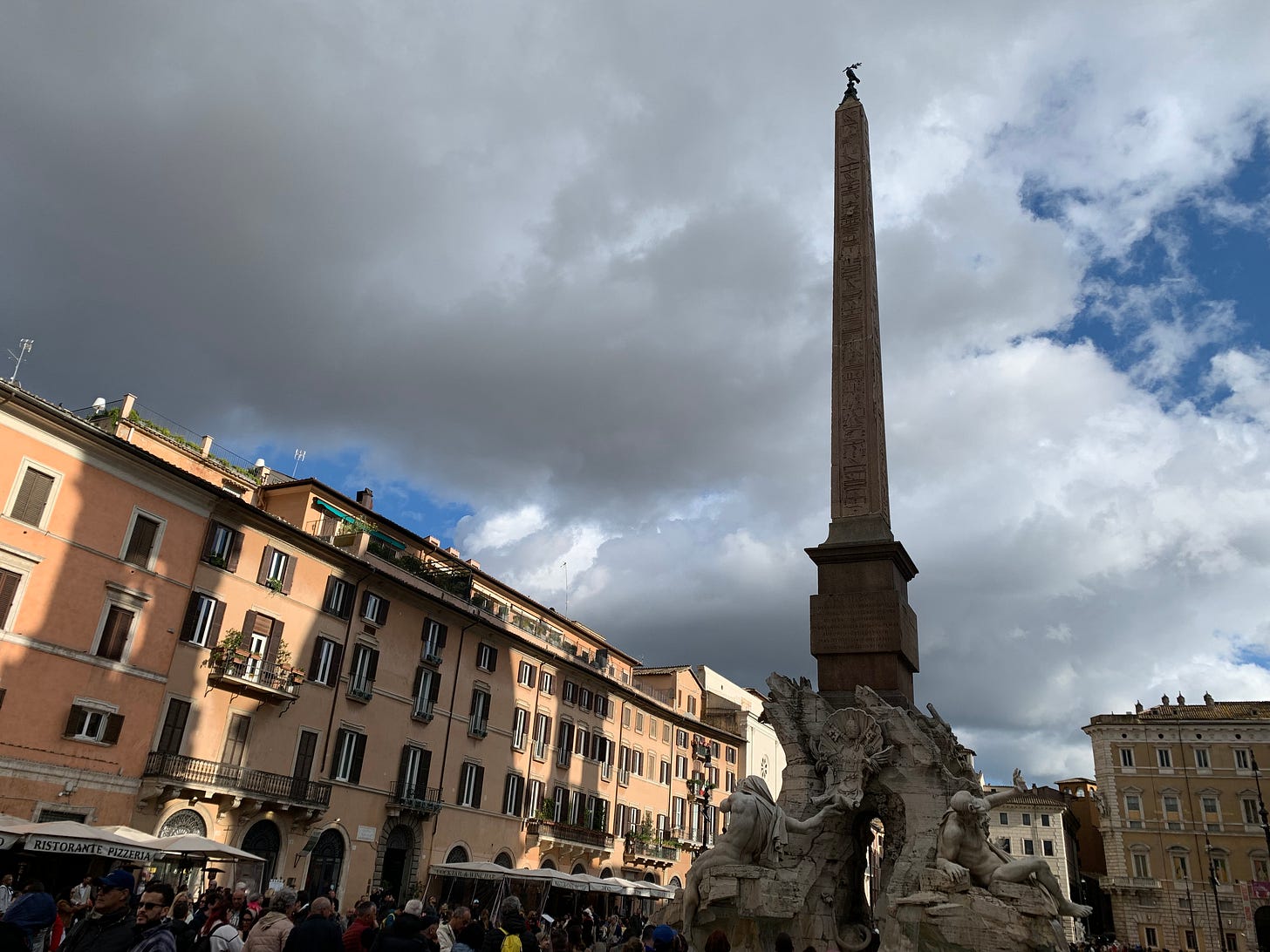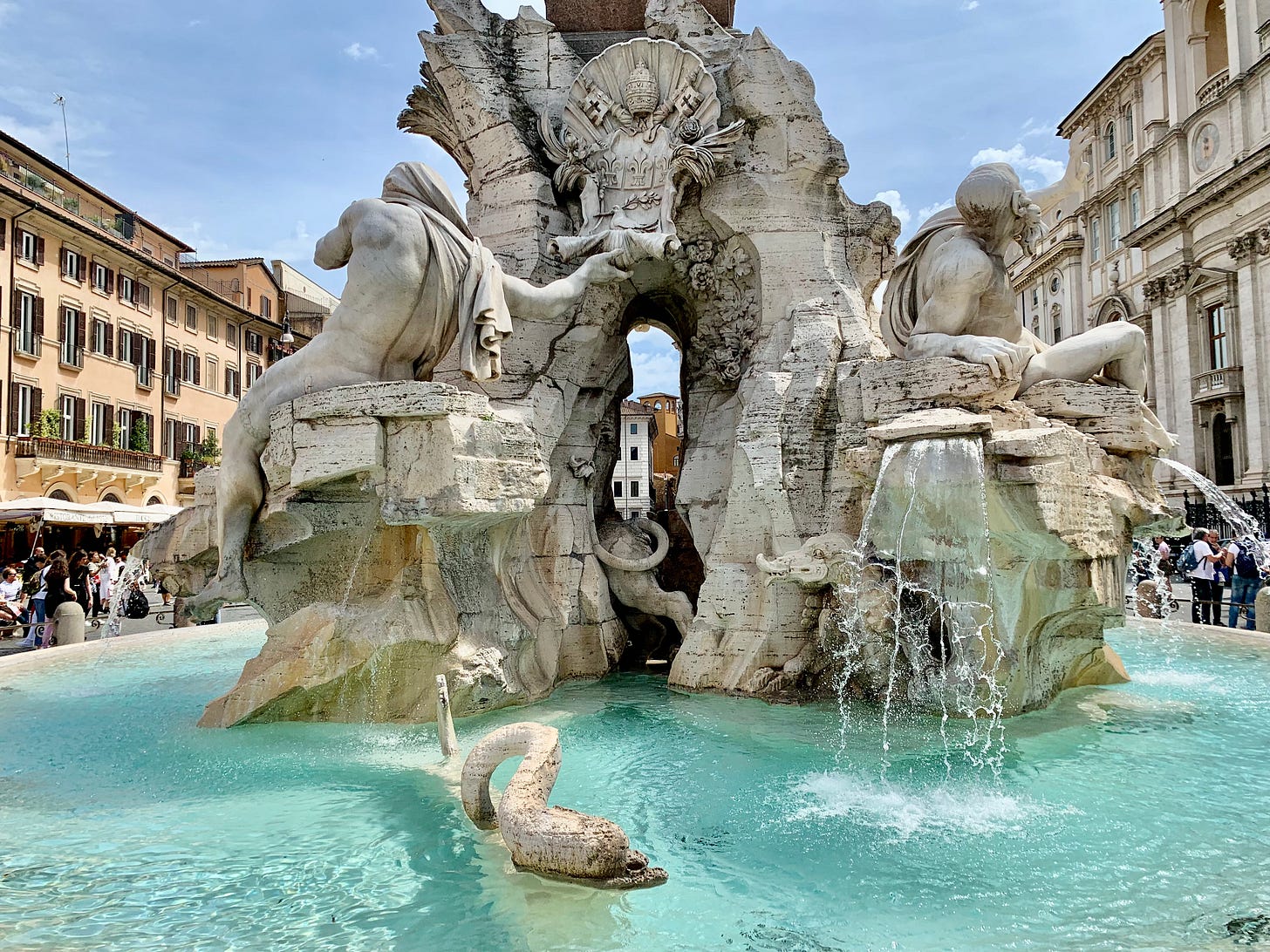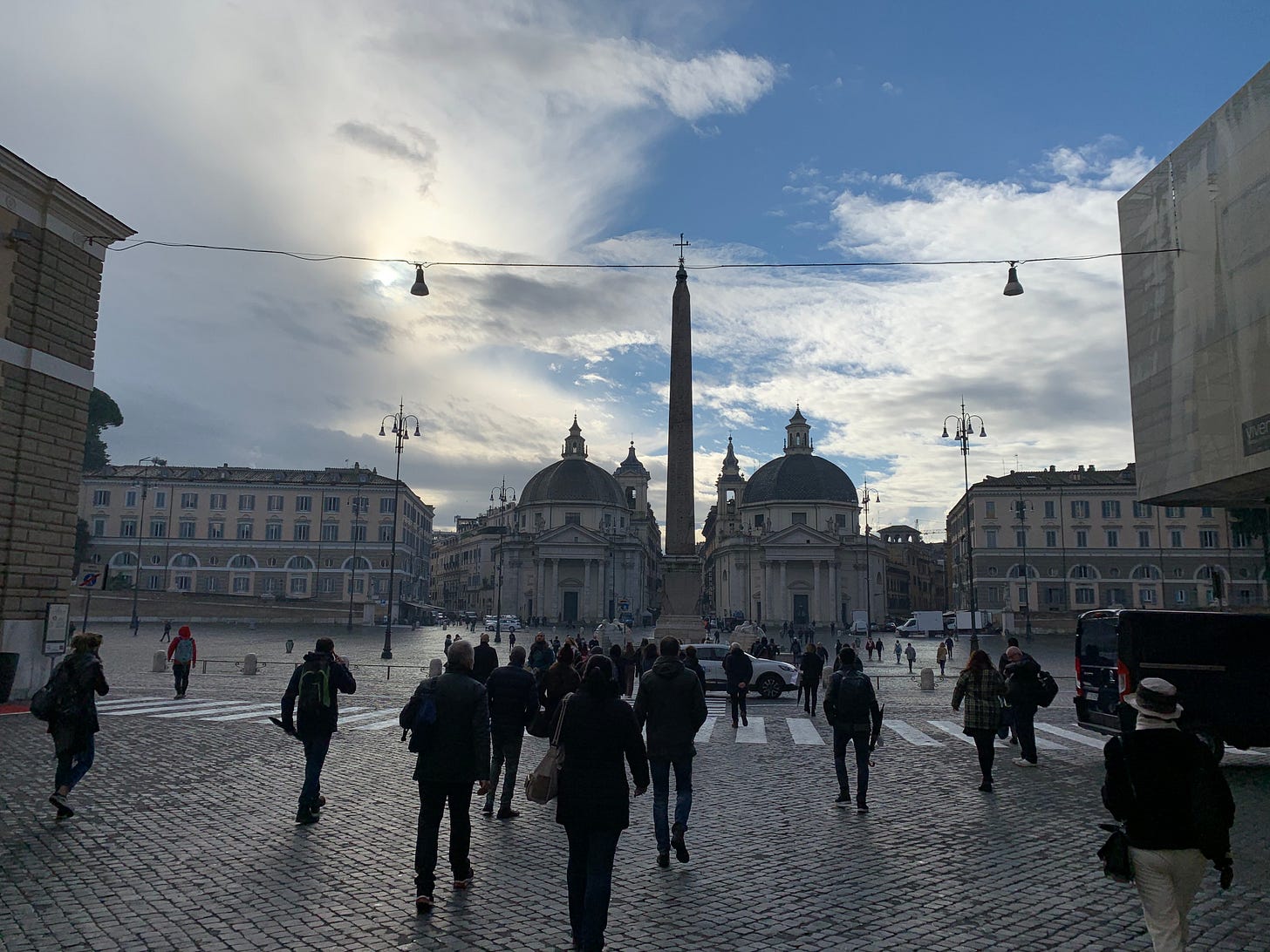Come, Holy Spirit, and send from heaven the ray of your light.
— Sequence of Pentecost, Roman Missal
Today Catholics celebrate the descent of the Holy Spirit upon the first Christian community, a group of about 120 people gathered around Jesus’ mother Mary. It is with this event that the Church became a mother, giving birth to about 3,000 children through the waters of baptism on that very day. This feast thus provides a perfect occasion for completing last week’s Mother’s Day reflection, turning from the Church’s maternity to the masculine role of Christ, following Saint Paul’s teaching on marriage as a reflection of the mystery of Christ and the Church (Ephesians 5:32).
If femininity involves receiving and nurturing life, providing a secure and welcoming space for it to grow, then masculinity has to do with bringing life there in the first place. In the case of the Church, the life that she receives is the new life of the children of God. It is the divine life, Life with a capital L: in other words, the Holy Spirit. The visible “descent” of the Holy Spirit on Pentecost is the arrival of this life into the “womb” of the first Christian community, which immediately bears fruit in the spiritual transformation of thousands of people, regenerating them to this new plane of life. This is the life that originally belongs to Christ, by which he is the Son of God, and is shared by means of his definitive act of radical love on the Cross. The spiritual marriage of Christ and the Church is essentially Christ’s transmission of his own life to the Church, joined to the Church’s free assent to this gift and active cooperation in caring for it.
In the original Pentecost event, the arrival of this Life was signified by wind and fire. These remain the most fundamental symbols of the Holy Spirit, together with the dove that appeared above Christ at his baptism, but the tradition has complemented these with several others, enshrined in the public prayers and hymns of the liturgy. For the purpose of illuminating the masculine side of the marriage of Christ and the Church, the comparison of the Holy Spirit to a ray of light — as in the verse from the Pentecost Sequence quoted above — proves particularly powerful.
The ray of light appears most frequently in the context of the angel Gabriel’s visit to the Virgin Mary, where he announces that she is to conceive and bear the Messiah, by the work of the Holy Spirit. There is a clear parallel between what happens in this scene and the event of Pentecost: in both cases, the divine Life “arrives” into a womb and generates sons of God. In this case, however, the womb is the real, biological womb of the Virgin, and the Son of God receives his entire life from this supernatural principle, in contrast to those baptized on Pentecost who already had a natural biological life.
Early Christian writers frequently compare the arrival of this life into the Virgin’s womb to the passage of a ray of light through a clear piece of glass. The light arrives to the interior of the building, but without doing any violence to it, in contrast to the violence that necessarily accompanies the first arrival of life in natural human generation, due to the physical obstacle to be overcome. This is a key part of what it means for Mary to be both virgin and mother: everything happens on the spiritual plane of perfect freedom, the fruit of a total cohesion of Mary’s will with the will of God.
This image thus simultaneously indicates the archetypical masculinity of sending the Holy Spirit, along with the radical difference between this mode of generation and that of natural human reproduction. The main point of Saint Paul’s comment on the marriage of Christ and the Church is precisely to highlight this deeper and more fundamental kind of sexual complementarity as a way of purifying and elevating the natural sexual act, showing how it intrinsically points beyond itself to a level where all the dangers and potential abuses that surround it are totally excluded.
This iconographical context allows us to complete the exegesis of Piazza del Popolo, begun in the last post with our reflection on the twin churches.
We can now see that the obelisk that dominates the Piazza is a masculine symbol, complementing the femininity of the church domes, but one that has a very different origin and motivation from what the Freudian theory would suggest. It seems that Egyptian obelisks were originally employed in the cult of the sun god, representing a ray of sunlight coming from heaven and reaching the earth. The sun is a masculine deity, who joins with the active receptivity of the feminine earth to bring life to all things. The ray of light that penetrates the earth with its energy is related to human anatomy, but only in the sense that both represent the same cosmic principle of masculinity, carrying the power of life to a place where it was formerly absent.
The general idea of the life-giving marriage of heaven and earth was taken up into Christian art from very early on. A prime example is the apse mosaic of the Lateran basilica, a medieval copy and elaboration of the image that decorated the first public church of Rome (which celebrated its 1700th anniversary last year). Here we see the face of Christ in the heavenly realm (apparently in the center of the sun), which is joined to the earth by the vertical beam of the Cross. By means of Christ’s Cross, the heavenly Life of the Holy Spirit (represented by the dove), flows down upon the earth, rendering the waters fertile, and vivifying whole variety of plants and animals depicted throughout the lower part of the scene. The identification of the earth with the Church is emphasized through the presence of various saints standing on the ground, especially Mary, the original icon of the Church.
The centrality of the Cross as the means by which the divine Life arrives on the earth (Church) provides a powerful illustration of Saint Paul’s teaching on marriage. The logic of Christ’s marriage to the Church is not one of violent domination, but one of unconditional love, ready to hand itself over to torture and death out of devotion to the beloved.
Bernini seems to have intuitively grasped the utility of the ancient obelisk in the service of this Christian archetype when he designed the fountain of the four rivers in Piazza Navona, which bears too strong a resemblance to the Lateran mosaic to be a coincidence.
The dove at the top of the obelisk (barely visible in the photo) was primarily meant as a symbol of the family who commissioned the work, but it unavoidably calls to mind the Holy Spirit as well. And just as in the basilica, the union of earth and heaven gives life to four rivers, which are filled with a diverse variety of vibrant living beings. But here the union itself is represented by the more ancient symbol of the stone ray of light, highlighting the continuity between the intrinsic dynamics of the created world and its re-creation in Christ.
This Christological symbolism gives special significance to the cross that crowns the Piazza del Popolo obelisk. That architectural choice directly communicates the fact that the marriage of heaven and earth prefigured by the Egyptian monument is finally fulfilled in the self-sacrificial love of the Logos Incarnate. Together with the maternal image we considered last time, the final layout of the square thus serves as a comprehensive sketch of the Christian mystery for the pilgrim entering the city. The Church is mother by receiving the Life of Christ, shining down upon her like a beam of light from his act of love on the Cross.
And this exchange of life is completed today, in the mystery of Pentecost.

